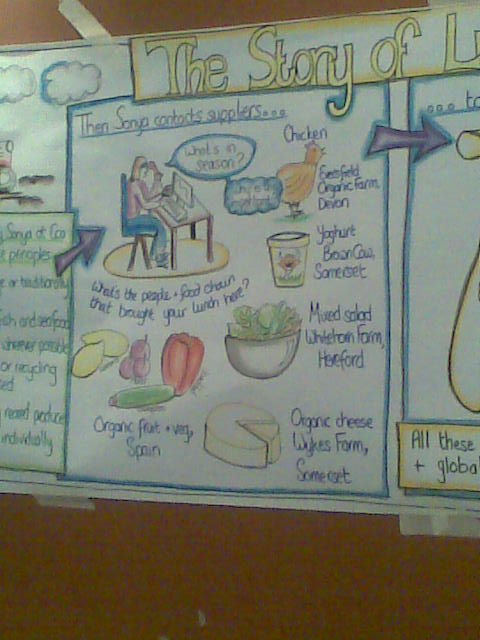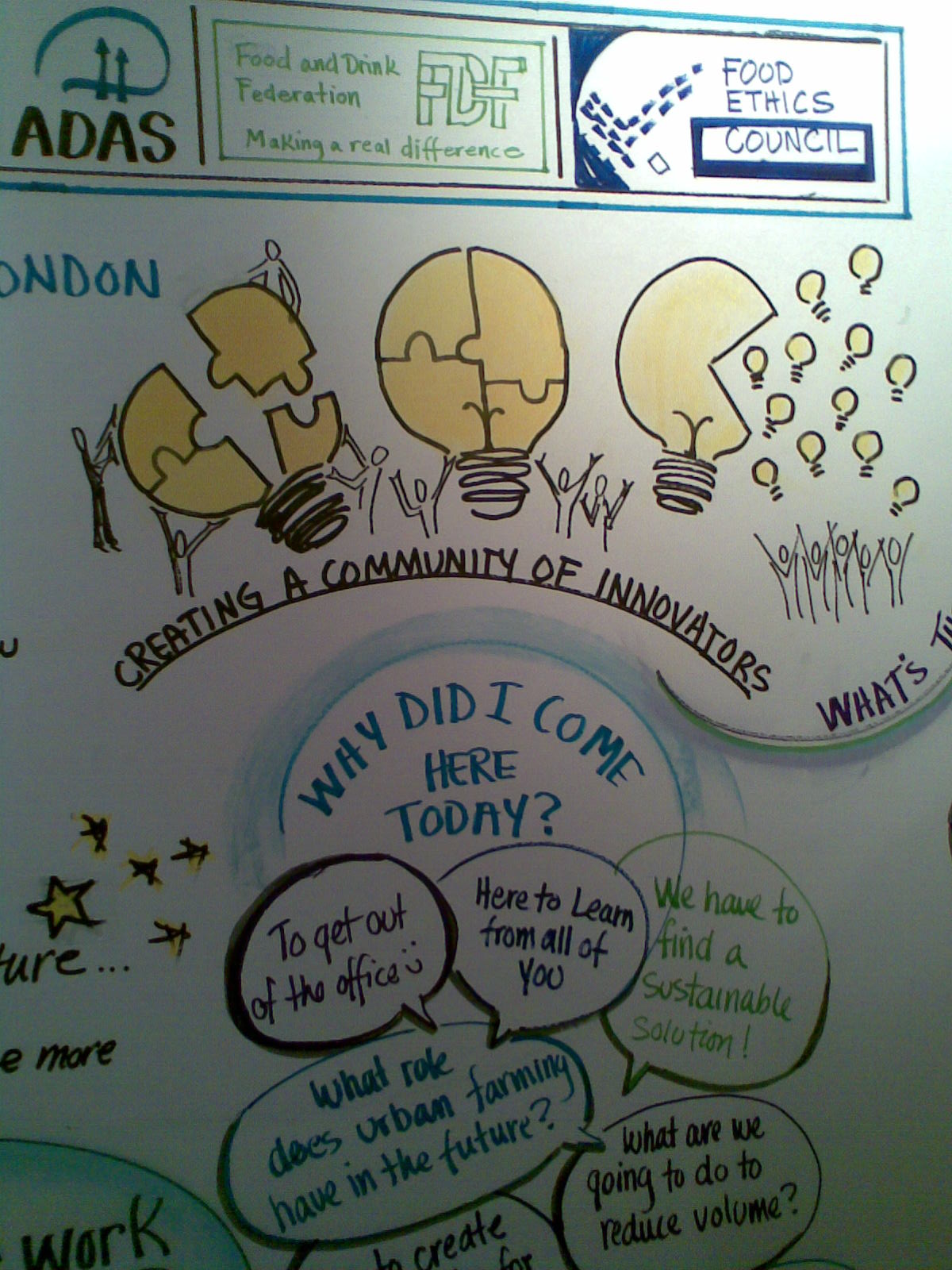Growing Communities is an inspiring social enterprise which grows and trades organic, seasonal fruit and veg in Hackney, North London. Transparency alert: I'm the chair of the Board.
It has three core activities:
- growing food, mostly salads, in its urban market gardens. The salad bags and other produce are sold through its own outlets, which are...
- ...a weekly organic 'veg box' scheme, with food going to around 3,000 people...
- ...and the UK's first weekly organic Farmers' Market.
The organisation was first set up by a small group of friends and neighbours paying in advance for produce to be produced on a single farm: a classic community supported agriculture scheme. Later, grant funding from sources like the National Lottery, the Esme Fairburn Foundation and the Bridge House Estates Trust provided the capital for starting up new initiatives. Hats off to all of them!
Trading fruit and veg through the box scheme, and an entrepreneurial can-do attitude meant that Growing Communities could, after a short time, move to being self-funding. This freedom enables it to be nimble and to change rapidly as it learns about how to make this alternative local food system work. Its work has always coupled a radical and strategic vision, with a deeply practical approach. Standing on its own two feet financially is a value as well as a tactic. It demonstrates to customers, members, suppliers and the wider world, that an alternative food system can work even in the current context.
It also makes growth possible - bootstrapping rather than dependent on grant funding and subsidies.
Good growth
But what does growth mean for an alternative enterprise like Growing Communities?
Its principles and structure (its box-scheme customers are voting members who attend AGMs in surprisingly large numbers and elect the Board a.k.a. 'Management Committee') mean that it is community-led. So a growth model which involves moving into a new area and opening up a mirror image of the Hackney original isn't good enough. What about simply opening more outlets in Hackney, and growing the local customer base? Yes, Growing Communities has done some of that, and intends to do more, with its satellite pick-up points for the weekly veg bags. The things limiting the growth of the Farmers' Market include limitations on the space where it is held, limits on the amount of produce small farmers and growers can grow, and a dearth of small producers who fit the exacting criteria: e.g. local, organic, and producers / growers who sell their own produce, not someone else's.
Growing Communities wants to keep the community-led, local value while providing a stable and reliable market for sustainably-produced food which will enable more growers to build strong (albeit small) businesses.
The growth model also needs to be very lean - Growing Communities can't provide capital funding or flashy materials, and it can't expect fat franchise fees from the new organisations - which, like Growing Communities, will be social enterprises or some other form of not-for-profit structure. And because every community is different, an emergent learning approach makes sense.
Mentoring and action learning model
So it's adopted a growth strategy which involves closely supporting other organisations which want to set up their own version of the Growing Communities model. The first few 'start ups' will be intensively supported with workshops, training, resources (things like copies of the ordering system, model contracts) and hands-on problem solving. As the 'start ups' get going, their learning and experience will be captured in a series of on-line briefings, which will then be available to the next tranche of start-ups. There will also be on-line discussions, so everyone can learn from each other.
This programme is being funded partly from the organisation's own resources, and partly by UnLtd, the social entrepreneur's organisation, which has provided some funding already. As it progresses, the idea is that successful start-ups will also help to fund the programme of live support and detailed guidance materials, and deliver parts of it.
Interested?
If you're interested in setting up a transformational pioneering food organisation, then check out the start up website here.
If you're interested in what it means for a sustainable organisation to grow, without being beholden to short-termist shareholders, being in debt to a bank or being dependent on grant funding, then keep an eye on Growing Communities.















